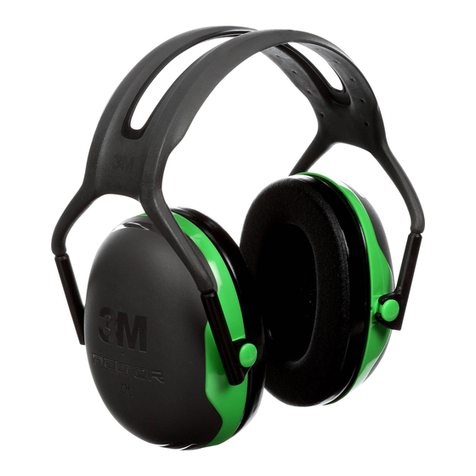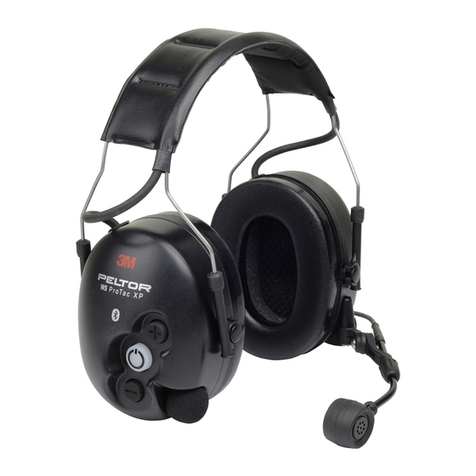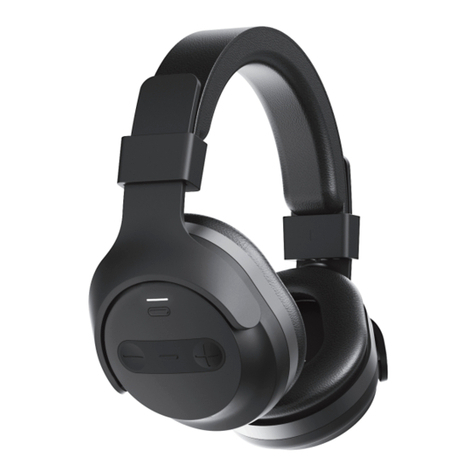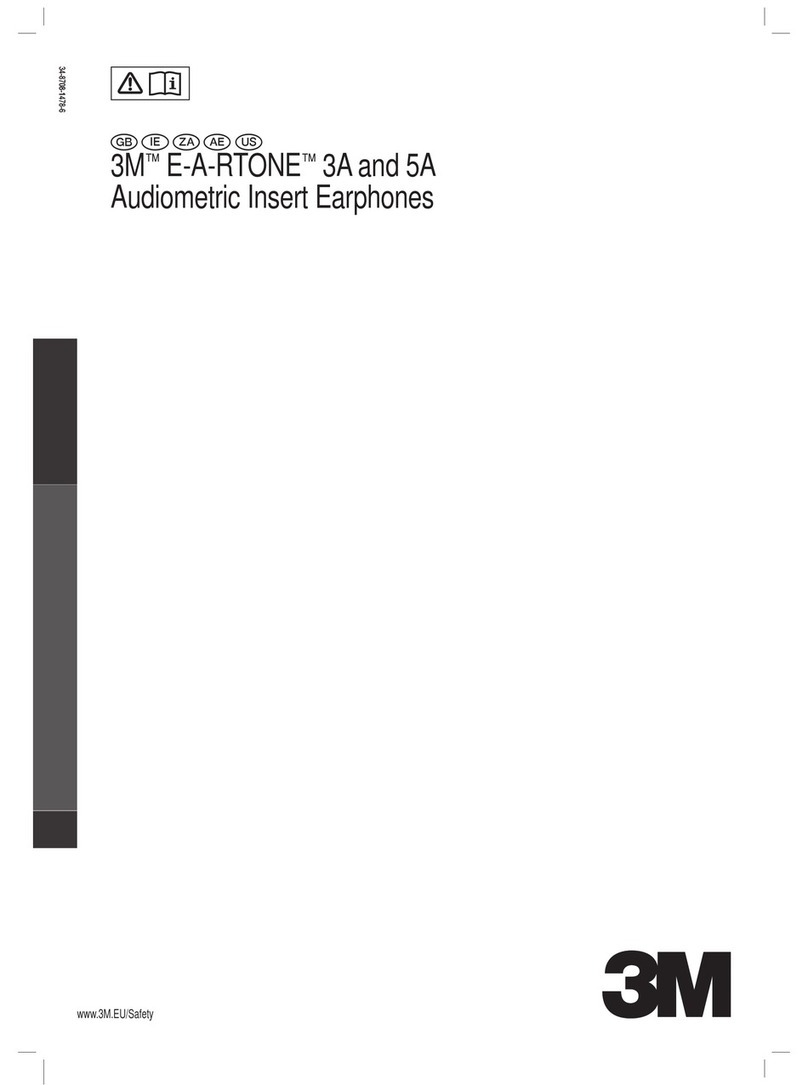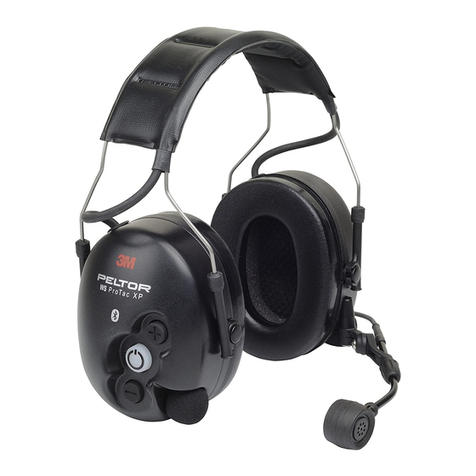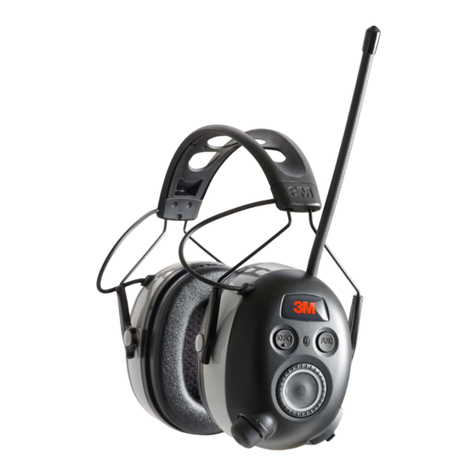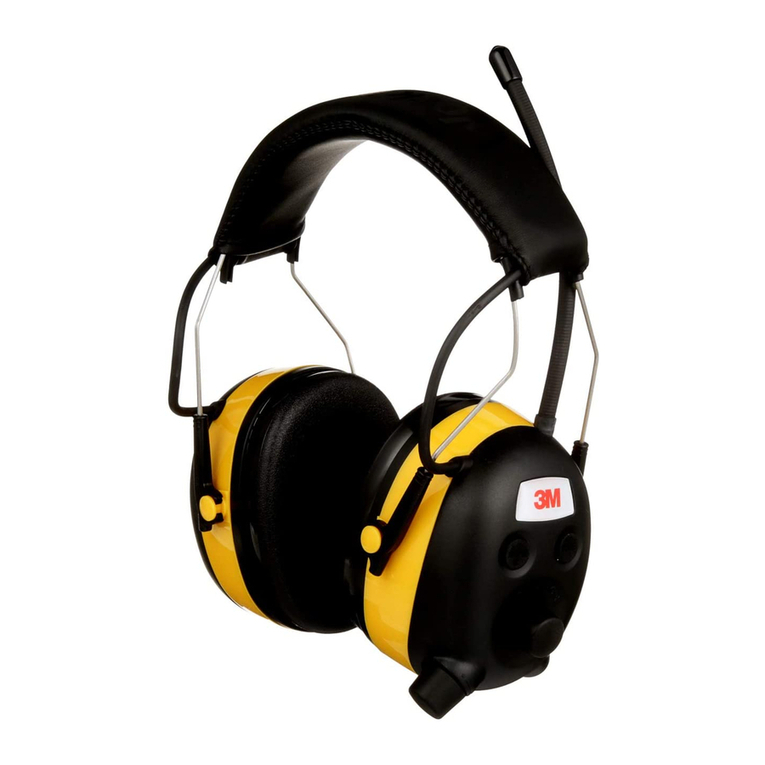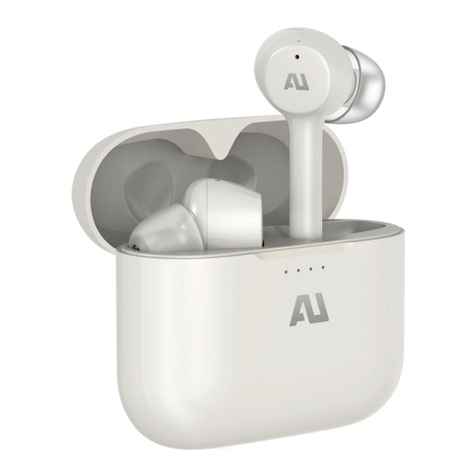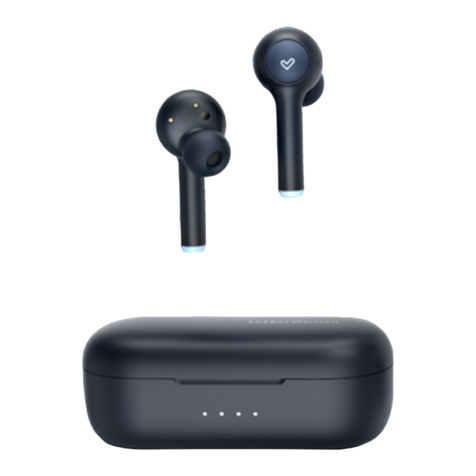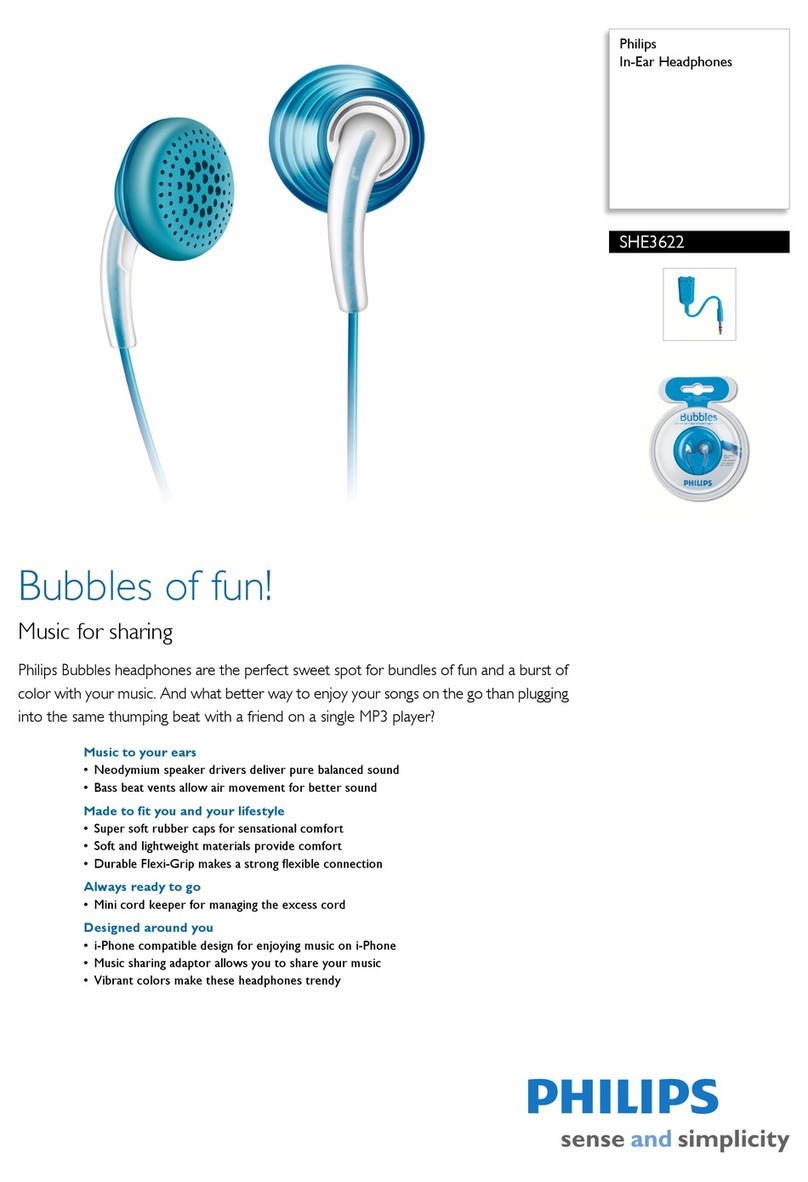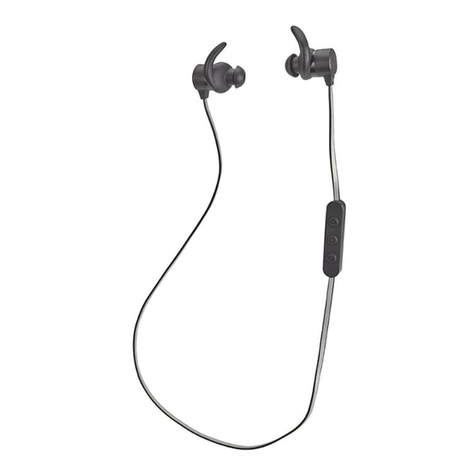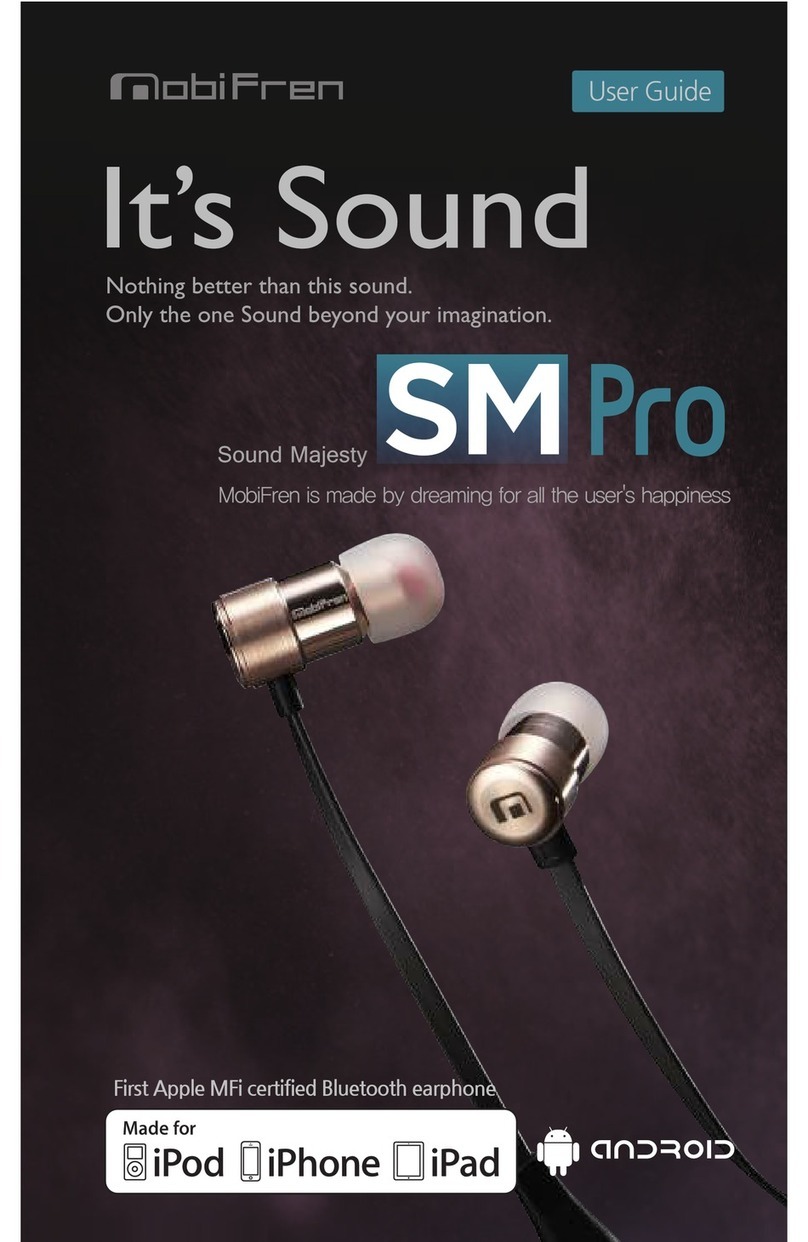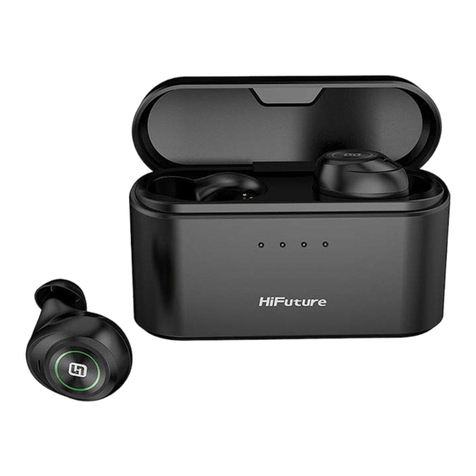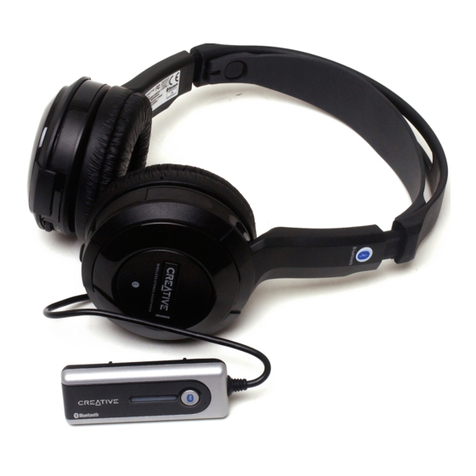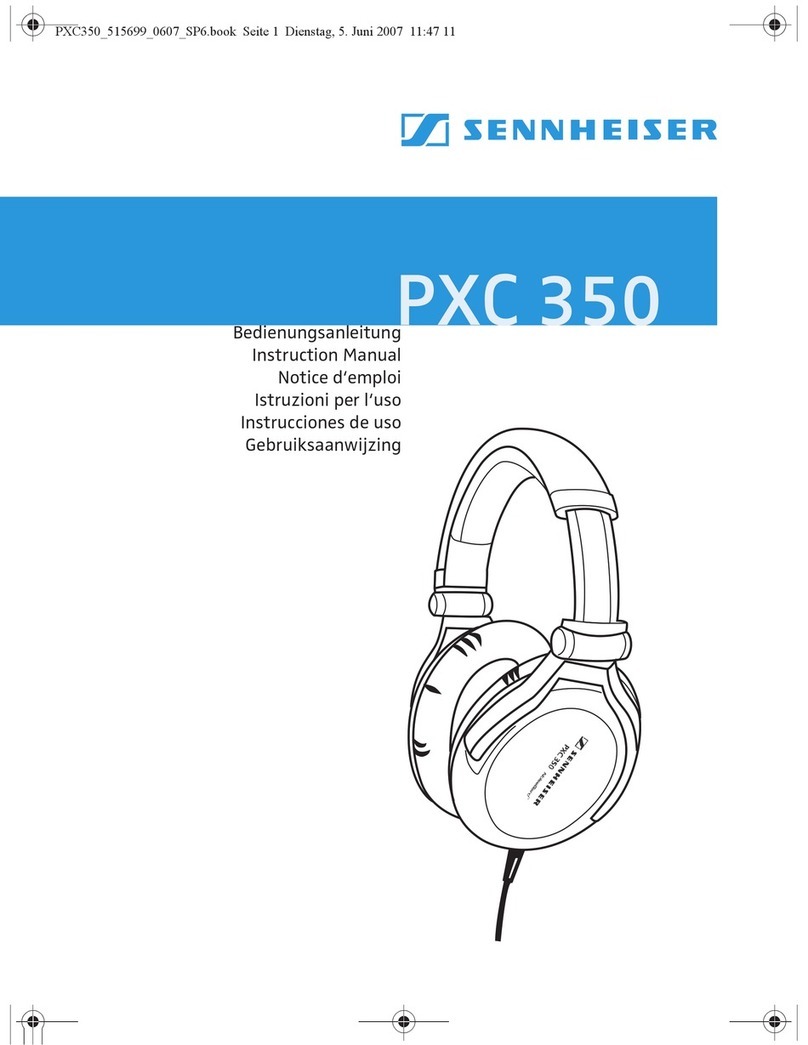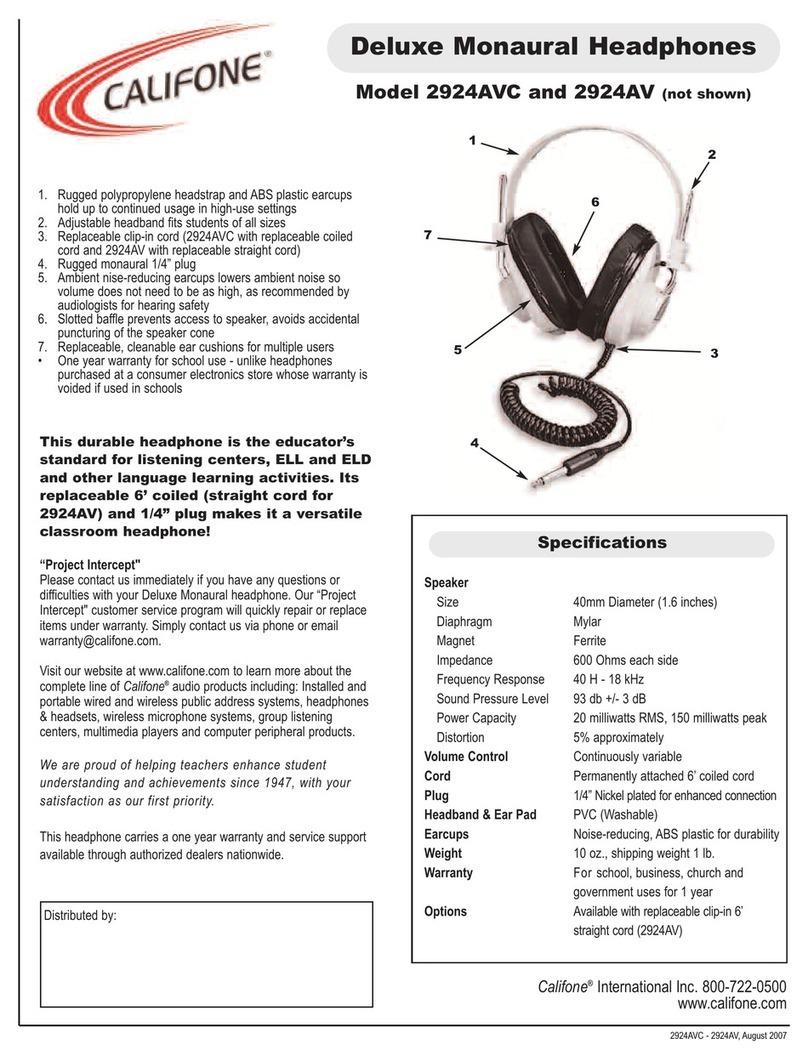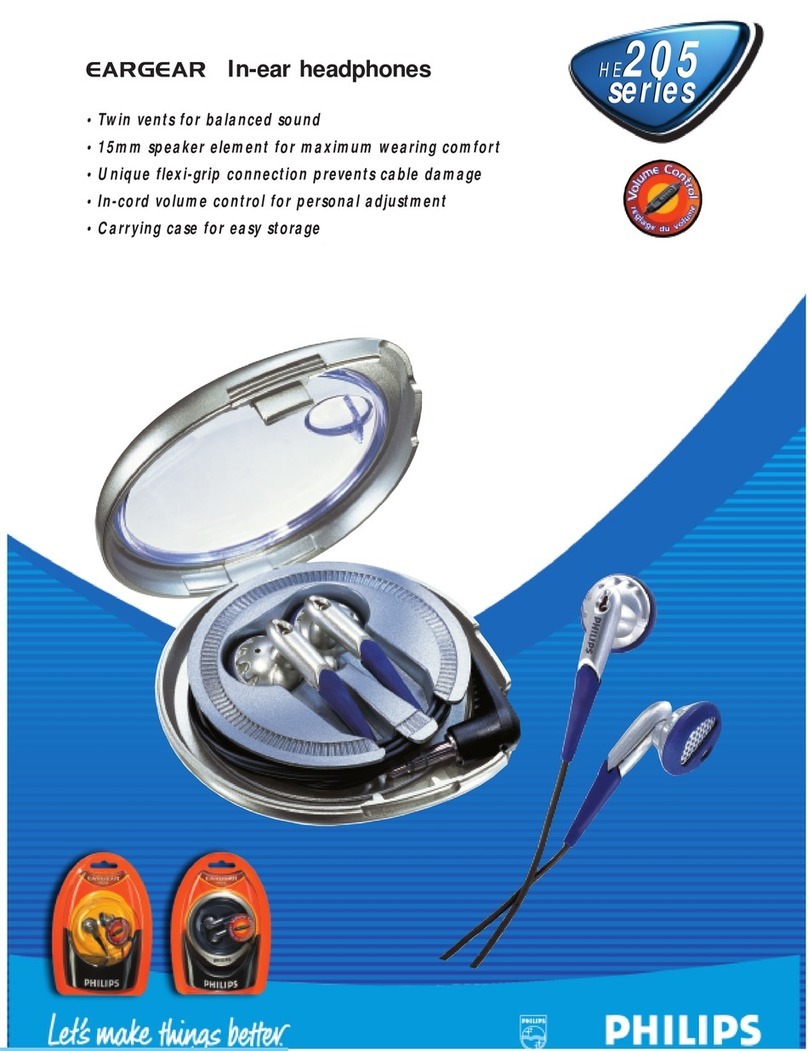
5
FR
3M™ PELTOR™ Headset
Série MT7H79*
Série HT*79*
TwinCup™ MT7*H540*
INTRODUCTION
Félicitations et merci d’avoir choisi le casque 3M™
PELTOR™ Headset pour votre protection auditive et vos
besoins de communication. Découvrez les protections
auditives communicantes de nouvelle génération !
INFORMATIONS RELATIVES À LA SÉCURITÉ
Veuillez lire, comprendre et observer toutes les informations
de sécurité gurant dans ces instructions avant d’utiliser le
casque de communication. Prière de conserver ces instruc-
tions en vue d’une utilisation future.
AVERTISSEMENT :
• Si les présentes informations et recommandations ne sont
pas observées, la protection fournie par le casque risque
d’être gravement compromise.
• Ces protections auditives permettent de limiter l’exposition
aux bruits dangereux et autres sons de forte intensité.
L’utilisation inappropriée ou la non-utilisation de
protections auditives lors de toute exposition à des
bruits dangereux peut provoquer une perte d’audition
ou des lésions auditives. Pour une utilisation adaptée,
contactez votre supérieur, lisez les instructions d’utilisation
ou appelez le support technique 3M.
• Le niveau de sortie du circuit audio électrique de cette pro-
tection auditive peut dépasser le niveau limite d’exposition
quotidienne.
• Les modèles spéciques sont dénis comme étant à
sécurité intrinsèque. Voir le document de référence séparé
pour plus d’informations.
ATTENTION :
• S’assurer que le casque est porté, ajusté et entretenu selon
les présentes instructions. Un port incorrect de ce dispo-
sitif réduira son efcacité pour l’atténuation du bruit.
Se reporter aux instructions d’utilisation ci-jointes,
indiquant comment le porter correctement.
• Les protections auditives doivent être portées en per-
manence dans des environnements bruyants pour une
protection adéquate.
• Bien que les protections auditives puissent être recom-
mandées pour la protection contre les effets nuisibles des
bruits impulsionnels, le niveau de réduction du bruit (NRR)
est basé sur l’atténuation du bruit continu et peut ne pas
représenter de façon adéquate la protection contre les
bruits impulsionnels comme les coups de feu (formulation
exigée par l’EPA).
• La réduction du bruit peut être inférieure lorsque des lunet-
tes classiques, des lunettes de protection ou des sangles
de respirateur sont portées entre la surface d’étanchéité
des coquilles et les côtés de la tête du porteur. Pour une
meilleure réduction du bruit, sélectionnez des lunettes qui
ont des branches nes et plates ou des sangles qui minimi-
sent l’interférence avec l’étanchéité des coquilles. Tirez les
cheveux longs en arrière le plus possible et retirez les ob-
jets qui peuvent gêner le montage du casque, comme les
crayons, chapeaux, bijoux ou écouteurs Ne tordez pas et
ne déformez pas le serre-tête, car cela rendra l’ajustement
plus lâche et entraînera une perte d’atténuation.
• Portées conformément aux instructions d’utilisation, ces
protections auditives contribuent à réduire l’exposition,
aussi bien aux bruits continus, tels que bruits industriels
et bruits provenant de véhicules et aéronefs, qu’aux bruits
impulsionnels très forts, tels que des coups de feu. Il est
difcile de prévoir la protection auditive requise et/ou réel-
lement obtenue durant l’exposition à des bruits impulsion-
nels. Pour les coups de feu, le type d’arme, le nombre de
salves tirées, le choix, l’ajustement et l’utilisation corrects
de la protection auditive, la manière dont on prend soin de
la protection auditive, ainsi que d’autres variables, auront
une incidence sur les performances. Si votre audition
semble diminuée ou si vous entendez une sonnerie ou
un bourdonnement durant ou après toute exposition à un
bruit (y compris à des coups de feu), ou si, pour toute autre
raison, vous suspectez un problème d’audition, votre ouïe
peut être exposée à des risques. Pour en savoir plus sur
la protection auditive adaptée à des bruits impulsionnels,
consulter le site www.3M.com/hearing.
REMARQUE :
• Cette protection auditive comporte une entrée audio
électrique. Il est recommandé à l’utilisateur de vérier le
bon fonctionnement du produit avant son utilisation. En cas
de distorsion ou de tout autre dysfonctionnement, suivez
les instructions du fabricant.
• Ce produit peut être endommagé par certaines substances
chimiques. Consulter le fabricant pour de plus amples
renseignements.
• Les coquilles, et en particulier les anneaux d’étanchéité,
peuvent se détériorer avec le temps et devront être
examinées fréquemment, an de détecter tout signe de
ssure ou de fuite.
• L’utilisation de kits d’hygiène sur les coussins peut modier
les performances des protections auditives.
• Au Canada, les utilisateurs de casques combinés avec des
protections auditives doivent se référer à la norme CSA
Z94.1 relative aux Casques de sécurité pour l’industrie.
• Température de stockage et d’utilisation : -4°F (-20°C) to
131°F (55°C).
• Poids de la protection auditive :
o MT7H79A*, MT7H79B* et MT7H79F*: 381 g
o MT7H79P3E: 320 g
o HT*79A*, HT*79B* et HT*79F*: 381 g
o HT*79P3E: 320 g
o MT7*H540F*: 428 g
o MT7*H540P3E: 345 g
• Par la présente, 3M Svenska AB déclare que ce casque
3M™ PELTOR™ Headset est conforme aux exigences
essentielles et aux autres dispositions pertinentes de la
directive PPE 89/89/CEE et à

